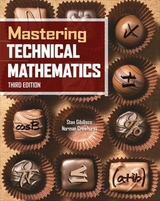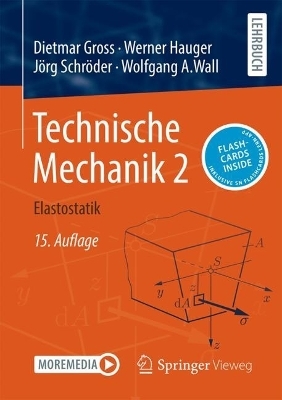
MASTERING TECHNICAL MATHEMATICS PB
TAB Books Inc (Verlag)
978-0-07-024828-1 (ISBN)
- Titel erscheint in neuer Auflage
- Artikel merken
The definitive self-teaching guide to learning mathematics is now fully up-to-date. Unlike other math books that make your start at page one and work your way up to the technique you need, this unique guide steers you right to your topic of interest, fully explains it within its own context, and then shows you how to use it with real-world examples. The unique jump-in-anywhere format and conversational tone of Stan Gibilisco's and Norman Crowhurst's "Mastering Technical Mathematics" makes this book - now thoroughly updated - a must for just about any technical professional.It's also the perfect instruction manual for independent students who want to structure their own learning.With this one-of-a-kind, case study-filled guide to all kinds of math used in technical fields, you can - find the technique you need quickly, along with easy-to-understand examples showing how it's used; skip from topic to topic in any order, and learn in your own style at your own pace; master technical math painlessly with this guide's easy-going style and example-packed format; discover new applications in logic, digital systems, and numbering systems; test yourself with quiz questions in each chapter (and complete worked-out solutions).
If you work in a field where math comes with the territory, don't miss the guide that puts a multitude of math solutions right at your fingertips: "Mastering Technical Mathematics, Second Edition."
Stan Gibilisco is a professional technical writer who specializes in books on electronics and science topics. He is the author of The Encyclopedia of Electronics, The McGraw-Hill Encyclopedia of Personal Computing, and The Illustrated Dictionary of Electronics, as well as over 20 other technical books. His published works have won numerous awards. The Encyclopedia of Electronics was chosen a "Best Reference Book of the 1980s" by the American Library Association, which also named his McGraw-Hill Encyclopedia of Personal Computing a "Best Reference of 1996."
Part I: Arithmetic as an Outgrowth of Learning to Count. From Counting to Addition. Subtraction. Multiplication. Division. Fractions. Area: The Second Dimension. Time: The Fourth Dimension. Part II: Introducing Algebra, Geometry, and Trigonometry as Ways of Thinking in Mathematics. First Notions Leading Into Algebra. Developing "School" Algebra. Quadratics. Finding Short Cuts. Mechanical Mathematics. Ratio in Mathematics. Trigonometry and Geometry Conversions. Part III: Developing Algebra, Geometry, Trigonometry, and Calculus. Systems of Counting. Progressions. Putting Progressions to Work. Developing Calculus Theory. Combining Calculus with Other Tools. Introduction to Coordinate Systems. Part IV: Developing Algebra, Geometry, Trigonometry, Calculus as Anlytical Methods in Mathematics. Complex Quantities. Making Series Do What You Want. The World of Logarithms. Mastering in the Tricks. Development of Calculator Aids. Digital Mathematics. Appendix: Answers to Questions and Problems.
| Erscheint lt. Verlag | 16.6.1999 |
|---|---|
| Zusatzinfo | 400 Illustrations, unspecified |
| Verlagsort | New York |
| Sprache | englisch |
| Maße | 152 x 229 mm |
| Gewicht | 893 g |
| Themenwelt | Mathematik / Informatik ► Mathematik ► Angewandte Mathematik |
| ISBN-10 | 0-07-024828-1 / 0070248281 |
| ISBN-13 | 978-0-07-024828-1 / 9780070248281 |
| Zustand | Neuware |
| Informationen gemäß Produktsicherheitsverordnung (GPSR) | |
| Haben Sie eine Frage zum Produkt? |
aus dem Bereich



